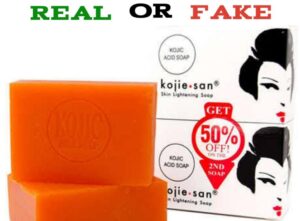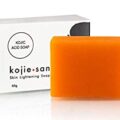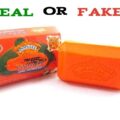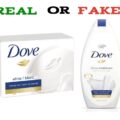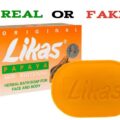Using genuine Kojic acid beauty soap is important for skin care as it can provide several benefits to the skin. Genuine beauty soap typically contains high-quality ingredients that are specifically formulated to cleanse, nourish, and protect the skin. Genuine beauty soap can effectively cleanse the skin, removing dirt, oil, and impurities that can clog pores and cause acne breakouts. Genuine beauty soap contains ingredients and plant extracts that can help to cleanse the skin without stripping it of its natural oils. Genuine beauty soap can help to hydrate the skin, leaving it soft and smooth.
Fake soaps can wreak havoc on your skin, as they often cause dry, dehydrated skin due to their high pH, your skin needs to maintain a specific, fairly acidic pH to function properly. The acid mantle, a thin, protective layer, is primarily composed of sebum, the skin’s naturally produced oil. Its integrity is susceptible to irregularities caused by internal and external factors, like diet, pollutants, and fake soaps. To keep skin healthy, the acid mantle needs to be able to do its job, and to do its job we need to avoid cleansers that could upset its pH balance.
What is Kojie San soap?
Kojie San soap is a special, all-natural kojic acid-formulated soap that helps lightens dark spots due to acne, age spots, freckles, sun-damaged skin, and other skin pigmentations. Kojic acid is a chelation agent produced by several species of fungi, especially Aspergillus oryzae, which has the Japanese common name koji. Kojic acid is a by-product in the fermentation process of malting rice, for use in the manufacturing of sake, the Japanese rice wine.
Kojie San soap is a by-product in the production of Koji, or Malted Rice, for use in the manufacture of Japanese rice wine. In cosmetics, Kojic Acid is popularly known for its excellent whitening effects and antioxidant properties. In addition to skin-lightening effects, kojic acid also contains some antimicrobial properties. It may help fight off several common types of bacterial strains even in small dilutions. This can help treat acne caused by bacteria in the skin. It may also lighten scars from acne that haven’t faded yet.
Kojic acid also has antifungal properties. It’s even added to some antifungal products to increase their effectiveness. It may be useful in treating fungal infections of the skin like yeast infections, candidiasis, ringworm, or athlete’s foot. If soap containing kojic acid is used regularly, it may help prevent both bacterial and fungal infections in the body. Original kojic acid soap is made even better with the addition of high-grade virgin coconut oil in the mix. This soap was awarded “Bath Soap Brand of the Year” at the Watson’s Health and Beauty Awards and Consumer “SM Top Choice” Awardee.
What Are The Ingredients Found In Original Kojie San Soap?
An Original Kojie San Soap contains the following:
- Cocos nucifera (Coconut) Oil
- De-ionized Water
- Sodium Hydroxide
- Fragrance
- Kojic Acid Glycerin
- AquA
- Xanthan Gum
- Caprylyl Glycol
- Glucose
- Chondrus crispus (Carrageenan)
- Phenoxyethanol
- Ethylhexylglycerine
- Cocodiethanolamide
- Mineral Oil
- Melaleuca alternifolia (Tea Tree) Oil
Benefits of Original Kojie San Soap
Here are some benefits of using Original Kojie San Soap:
- Skin brightening: Original Kojie San Soap has been shown to effectively lighten and brighten the skin by inhibiting the production of melanin, the pigment that gives skin its color. This can help to reduce the appearance of dark spots, age spots, and other types of hyperpigmentation.
- Anti-aging: Original Kojie San Soap has antioxidant properties that can help to protect the skin from damage caused by free radicals, which can contribute to the signs of aging. Regular use of Original Kojie San Soap can help to improve the overall appearance of the skin, reducing the appearance of fine lines, wrinkles, and other signs of aging.
- Acne treatment: Original Kojie San Soap can also be effective in treating acne and other types of blemishes. Kojic acid has antimicrobial properties that can help to kill bacteria on the skin, reducing the risk of breakouts.
- Gentle exfoliation: Original Kojie San Soap can help to exfoliate the skin gently, removing dead skin cells and revealing brighter, smoother skin. This can help to improve the texture and tone of the skin, giving it a healthy, youthful appearance.
- Safe for most skin types: Original Kojie San Soap is generally considered safe for most skin types, including sensitive skin. However, it is always a good idea to do a patch test before using any new skincare product to check for any adverse reactions.
Overall, Original Kojie San Soap can be an effective and safe addition to a skincare routine for those looking to brighten and improve the appearance of their skin. As with any skincare product, it is important to choose a high-quality product from a reputable brand and use it as directed.
How to Identify Original Kojie San Soap
According to the FBI, the Internet has given consumers widespread access to health and beauty products, some labeled with “anti-aging” properties that they don’t know are fake. Government and industry studies and testing have discovered dangerous ingredients within counterfeit “anti-aging” products. Fraudulent cosmetics may contain arsenic, beryllium, and cadmium, all known carcinogens along with high levels of aluminum and dangerous levels of bacteria from sources such as urine. Some of these products have caused conditions like acne, psoriasis, rashes, and eye infections. A fake Kojie San Soap is very easy to distinguish from the original, the fake orange soaps are slightly darker than the original. Here are other tips to help you avoid buying a fake Kojie San Soap.
Kojie San Soap packaging: Back in the day, you could spot a counterfeit based solely on shoddy packaging. Now, that’s a lot harder to do. Now, the packaging can look almost identical.” In other words, just because something looks legit doesn’t mean that it actually is, so it’s important to test the actual product or check out the retailer selling the Kojie San Soap before slathering it all over your face.
Buy Kojie San Soap from a reputable seller: When you purchase products directly from a brand or an authorized retailer, you know what you’re getting. Elsewhere on the internet, it’s not so clear. Websites that work with third parties which many, people turn to for their beauty products are hotbeds for fakes, and if you think you’re getting a great deal on something that’s usually super expensive or sold out elsewhere, chances are it’s probably too good to be true.
Check the Kojie San Soap reviews: If you are going to buy skin care products on Amazon, for example, which has many third-party sellers, it’s important to research by reading a seller’s reviews. “If a seller has repeated negative reviews, or reviews that your gut tells you are ‘staged’ or ‘fake’ because they all contain nearly the exact same language, do not purchase your Kojie San Soap from that seller even if the price is so compelling and attractive.
Test the Kojie San Soap: Testing new products on your arm or hand is always important, but it’s especially important in the case of counterfeits. If a Kojie San Soap you’ve been using forever is suddenly giving you contact dermatitis when you try it, it’s a good sign that it’s a fake Kojie San Soap. ALSO READ: How to Identify Original K Brothers Soap


